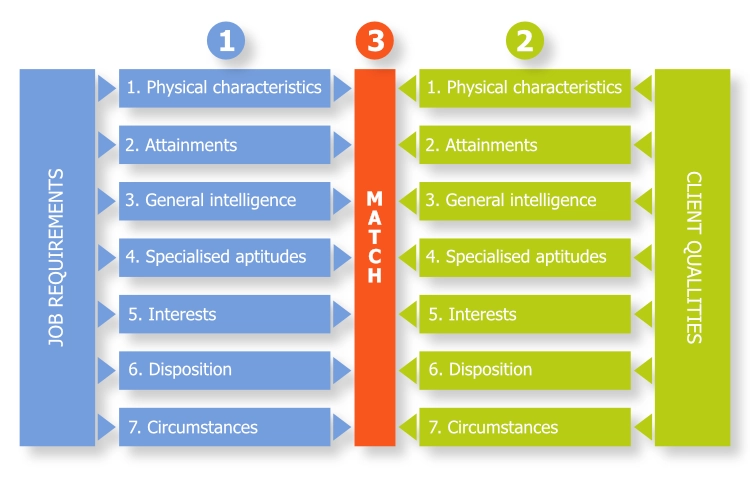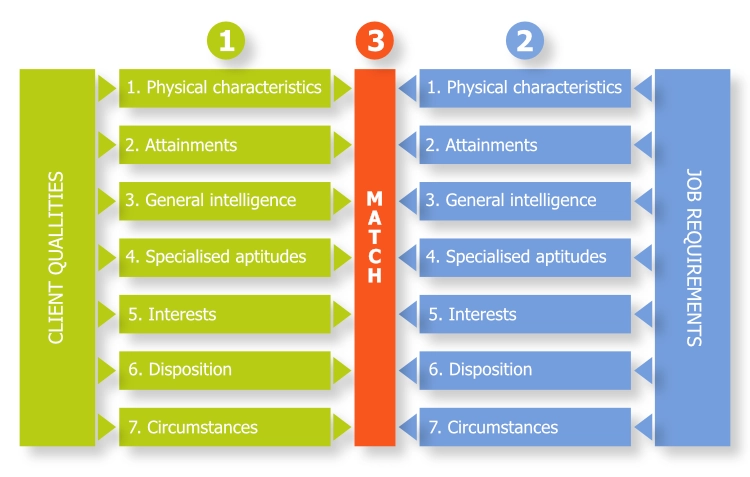Differentialism – Environmental Theory – Trait and Factor Theory
Alec Rodger – 1952
Table of Content
Introduction
Seven Factor Theory was originally intended to be used for recruitment and selection interviews. Career professionals quickly adopted this tool for career guidance. It consists of the classic 3 step process after which the practitioner can make career suggestions to the client. It’s ancestry doesn’t leave much to be guessed. Much of what is said about Parsons can be said about Rodger’s seven step plan, though it offers slightly more direction in providing the steps by which to explore, and then match, the different criteria.
How can it actually be used in practice?
In essence, in a job assessment environment, the original home of this theory, the employer describes the 7 different criteria for the job and then explores the same criteria in the cleint, offering a matching score by which a decision can be made on whether a job applicant is a good match or not.
- Exploration of jobs along the 7 criteria – what do different jobs require?
- Exploration with the client along the same 7 criteria – what does the client have to offer?
- Assessment on whether there is a good match and subsequent advice for the client to pursue exploring the career further as an option worthwhile of consideration.
I think this model is largely self explanatory, but I would suggest that, unless there are special circumstances such as a client with strong career interests, I would turn around the model and explore the client side first. So… swipe the slider left for a more convenient model.
What does Rodger’s Model look like in practice and in Theory…







